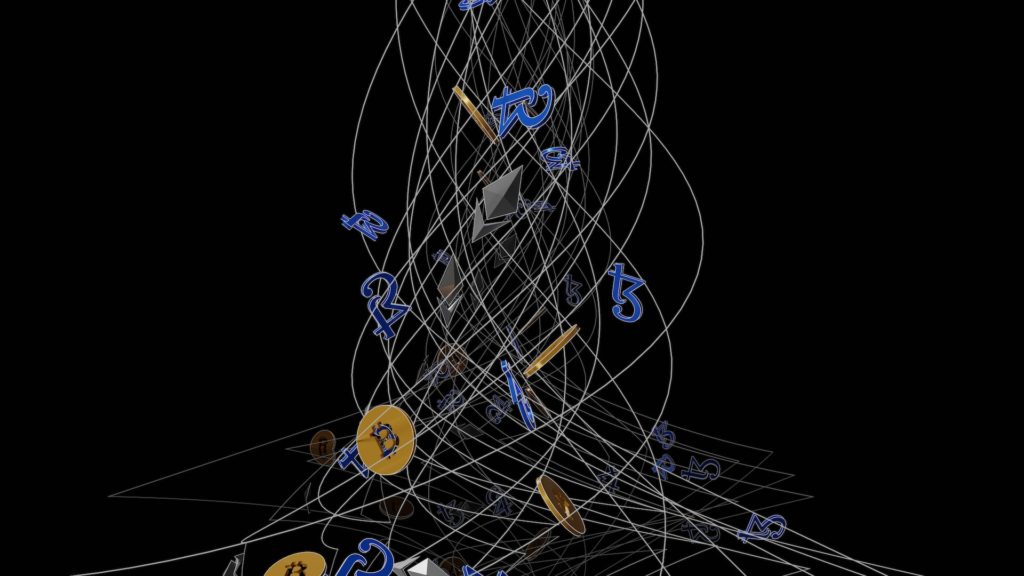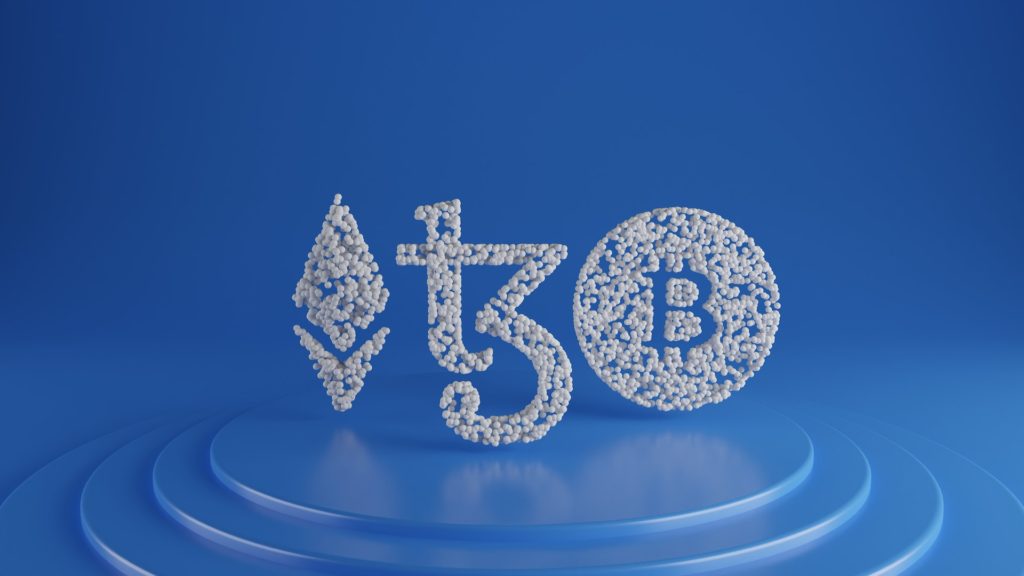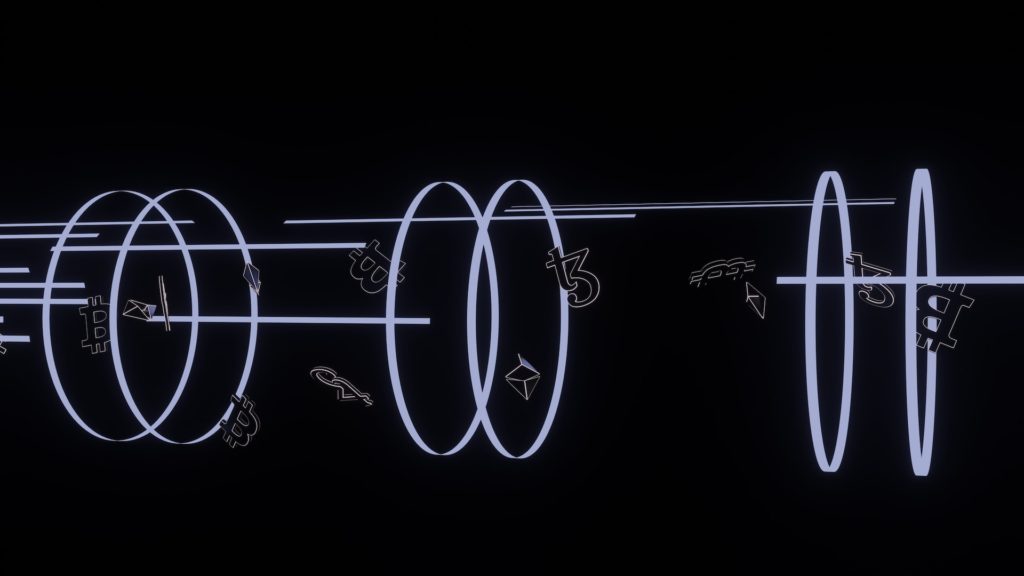Table of Contents
Before we start talking about the hash rate, we first need to explain what it is.
What is Bitcoin Hash Rate?
The amount of processing and computing power that is added to the Bitcoin network as a result of mining is referred to as the cryptocurrency’s hash rate. The term “hash” refers to an alphanumeric code of a predetermined length that can represent any number of words, messages, or pieces of data.
The cryptocurrency known as Bitcoin (BTC) as well as several others are underpinned by a technology known as blockchain. Blocks are the building blocks that make up the Bitcoin network. These blocks are linked together in a chain. Blocks are analogous to files in that they contain information on the most recent transactions that have been made everywhere across the network.

Due to the fact that they operate similarly to data files, smaller blocks consume a lower proportion of the processing resources necessary to validate them. In light of this circumstance, hashing becomes relevant. “Hashing” a block is the process that verifies whether or not the transactions on a network are legitimate. As a reward, bitcoins are provided to participants in either the network or the hashing process. So, what exactly does the term “hash rate” represent for cryptocurrency miners and investors?
The prediction of individual miners’ levels of profitability could be aided by the calculation of their hash rate. The hash rate of each machine is unique due to the fact that cryptocurrencies are mined using a wide variety of distinct pieces of mining hardware. The network hash rate increases when mining equipment is updated, and vice versa; this is because mining requires variable degrees of processing speed, memory, and power.
A more robust network does not necessarily result in BTC being mined at a faster rate, however, because the network is structured to release a set quantity of Bitcoin at a time, this can slow down the mining process.
Changes in the hashing power of the network have an effect not only on the number of miners participating in the network but also on the difficulty of mining and, ultimately, the profitability of mining. In addition, the difficulty of mining increases as more miners join the network. This is due to the fact that it requires a greater number of guesses per second to solve the difficult mathematical equation that is required to obtain the block reward.
As a direct consequence of this, the difficulty of the Bitcoin network causes the hash rate to increase. In a similar vein, the hash rate is an essential indicator for investors in cryptocurrencies of how secure the proof-of-work (PoW) network of a cryptocurrency may be against attacks from hackers. Having said that, as the hash rate increases, it becomes more difficult and expensive to launch attacks against networks.
Why is Hash Rate Important?

The hash rate of a blockchain network is an essential indicator of its strength, and more precisely of its level of safety.
So, what will take place if the hash rate of Bitcoin increases? As more workstations are dedicated to discovering the next block by genuine miners, the hash rate grows, which indicates that the network’s overall processing power is high and that it is difficult for bad actors to tamper with the network. In spite of this, the controller of the majority of the network’s hash rate might undo his payments by reordering the payments, which would cause problems with double spending because the network’s hash rate would drop.
Now, what happens if the hash rate of Bitcoin drops? Due to the low cost of carrying out a 51% assault, a reduction in hash rate leaves a network more vulnerable to being targeted by cybercriminals and crypto heists. In addition, a lower hash rate results in a cryptocurrency that is less decentralized, which creates a significant danger for investors in cryptocurrencies. If the hash rate suddenly lowers, crypto platforms may temporarily halt trading or delist a currency in order to protect their users from the risk of losing their funds. Is it therefore accurate to say that a high hash rate is a good measure of the security of a network?
As is the case with the vast majority of Proof-of-Work cryptocurrencies, it is generally accepted that a hash rate that is significantly higher is preferable for the overall security and stability of the blockchain network. This is due to the fact that a higher hash rate results in higher energy costs, an increase in the number of miners, and an increase in the amount of time required to take control of the network.
How does Bitcoin’s Hash Rate Work?

One of the methods that are used to determine Bitcoin’s hash rate is the SHA-256 cryptographic hashing function. This function takes any data that is inputted and transforms it into a string that is 256 bits long (the hash). Because this method only works in one direction, it is straightforward to compute the hash value based on the input value, but not the other way around.
The number of calculations that can be performed in one second is referred to as the hash rate. This number, which can be stated in billions, trillions, quadrillions, and quintillions, is a measurement of how many calculations can be performed. For instance, if you have a hash rate of 1BH/s, that means that you may generate one billion estimates every single second.
But how exactly can one determine Bitcoin’s hash rate? Exahashes per second, or EH/s for short, are the units used to denote the hash rate of Bitcoin. One exahash is equal to one quintillion hashes. It is possible to get a reasonable estimate of the total network hash rate by contrasting the typical amount of time that passes between mined blocks with the difficulty at a given point in time on the network.
The question now is, how difficult is mining? In the context of cryptocurrency mining, “mining challenge” refers to how difficult it is for miners to generate a hash that is lower than the intended hash. This is performed by lowering the numerical value of the hashed block header. Each new Bitcoin block is discovered around once every ten minutes on average. However, the difficulty of mining Bitcoin will reduce if Bitcoin will be discovered less frequently than the average time, and vice versa.

In addition, it is of the utmost importance to take into account the fact that the mining difficulty of the Bitcoin network is subject to an automatic adjustment every 2,016 blocks mined. Therefore, the level of difficulty in the mining network can be changed either higher or lower based on the number of miners and the overall hashing power that they contribute to the network. So, what exactly is the current hash rate of Bitcoin?
The exact hashing power of Bitcoin is unknown; however, one can speculate about it based on the number of blocks that are being mined at the moment and the level of difficulty of each block. The question now is, how can the hash rate of Bitcoin be monitored? According to the data provided by Blockhain.com, the current hash rate of Bitcoin is around 224.383 million TH/s as of September 25, 2022.
How does the Hash Rate Affect Bitcoin Price?

Computational power, the profitability of mining, and the difficulty of the network are the primary factors that influence the price of Bitcoin. The hash rate adjusts to reflect the current price of Bitcoin because miners are paid in Bitcoin but must pay their expenses in their native currency.
Having said that, the value of Bitcoin increases in direct proportion to the amount of processing power that is utilized by the Bitcoin network. Furthermore, sensible miners are only ready to mine Bitcoin if they can make a profit off of it. This implies that any other cryptocurrency that is not in demand would have no value, and miners would shift their resources elsewhere.
In addition, the difficulty of the network can be substituted for the entire mining power if necessary. This concept is supported expressly by the algorithm that governs the Bitcoin network, which means that the difficulty readjusts to compensate for dropping or, alternatively, to offset the impact of expanding mining power.
Not only are fluctuations in the price of Bitcoin significant for purely speculative reasons, but they are also significant because of the impact that they have on the amount of energy that is consumed by the Bitcoin network and how miners, who are responsible for powering the Bitcoin infrastructure, will behave in the future. Additionally, it has been speculated for a considerable amount of time that the price of Bitcoin is connected to the “hash rate,” which refers to the total number of computations that are carried out by Bitcoin miners.
The level of effort that a manufacturer puts into producing a good or service has no bearing on the price that consumers pay because producers in competitive marketplaces are price takers. Nevertheless, this notion may appear to be incorrect because the level of effort that a manufacturer puts into producing a good or service has no bearing on the price that consumers pay.
On the other hand, this may not be the case for the Bitcoin market because there are just a few of mining pool owners that can coordinate their activities to influence the market price. In addition, the inelastic nature of the Bitcoin supply combined with the tremendous competition that exists within the mining business may cause miners to behave in a different manner.
Disclaimer: The opinion expressed here is not investment advice – it is provided for informational purposes only. It does not necessarily reflect the opinion of EGG Finance. Every investment and all trading involves risk, so you should always perform your own research prior to making decisions. We do not recommend investing money you cannot afford to lose.
 English
English Français
Français Español
Español Bahasa Indonesia
Bahasa Indonesia 中文 (中国)
中文 (中国) Русский
Русский Português
Português Deutsch
Deutsch

